Betty Zane Read online
Etext prepared by Bill Brewer, [email protected]
BETTY ZANEBYZANE GREY
TO THE BETTY ZANE CHAPTER OFTHE DAUGHTERS OF THE REVOLUTIONTHIS BOOK IS RESPECTFULLY DEDICATEDBY THE AUTHOR
NOTE
In a quiet corner of the stately little city of Wheeling, West Va.,stands a monument on which is inscribed:
"By authority of the State of West Virginia to commemorate the siegeof Fort Henry, Sept 11, 1782, the last battle of the AmericanRevolution, this tablet is here placed."
Had it not been for the heroism of a girl the foregoing inscriptionwould never have been written, and the city of Wheeling would neverhave existed. From time to time I have read short stories andmagazine articles which have been published about Elizabeth Zane andher famous exploit; but they are unreliable in some particulars,which is owing, no doubt, to the singularly meagre details availablein histories of our western border.
For a hundred years the stories of Betty and Isaac Zane have beenfamiliar, oft-repeated tales in my family--tales told with thatpardonable ancestral pride which seems inherent in every one. Mygrandmother loved to cluster the children round her and tell themthat when she was a little girl she had knelt at the feet of BettyZane, and listened to the old lady as she told of her brother'scapture by the Indian Princess, of the burning of the Fort, and ofher own race for life. I knew these stories by heart when a child.
Two years ago my mother came to me with an old note book which hadbeen discovered in some rubbish that had been placed in the yard toburn. The book had probably been hidden in an old picture frame formany years. It belonged to my great-grandfather, Col. Ebenezer Zane.From its faded and time-worn pages I have taken the main facts of mystory. My regret is that a worthier pen than mine has not had thiswealth of material.
In this busy progressive age there are no heroes of the kind so dearto all lovers of chivalry and romance. There are heroes, perhaps,but they are the patient sad-faced kind, of whom few take cognizanceas they hurry onward. But cannot we all remember some one whosuffered greatly, who accomplished great deeds, who died on thebattlefield--some one around whose name lingers a halo of glory? Fewof us are so unfortunate that we cannot look backward on kith or kinand thrill with love and reverence as we dream of an act of heroismor martyrdom which rings down the annals of time like the melody ofthe huntsman's horn, as it peals out on a frosty October morn purerand sweeter with each succeeding note.
If to any of those who have such remembrances, as well as those whohave not, my story gives an hour of pleasure I shall be rewarded.
PROLOGUE
On June 16, 1716, Alexander Spotswood, Governor of the Colony ofVirginia, and a gallant soldier who had served under Marlborough inthe English wars, rode, at the head of a dauntless band ofcavaliers, down the quiet street of quaint old Williamsburg.
The adventurous spirits of this party of men urged them toward theland of the setting sun, that unknown west far beyond the bluecrested mountains rising so grandly before them.
Months afterward they stood on the western range of the Great Northmountains towering above the picturesque Shenandoah Valley, and fromthe summit of one of the loftiest peaks, where, until then, the footof a white man had never trod, they viewed the vast expanse of plainand forest with glistening eyes. Returning to Williamsburg they toldof the wonderful richness of the newly discovered country and thusopened the way for the venturesome pioneer who was destined toovercome all difficulties and make a home in the western world.
But fifty years and more passed before a white man penetrated farbeyond the purple spires of those majestic mountains.
One bright morning in June, 1769, the figure of a stalwart, broadshouldered man could have been seen standing on the wild and ruggedpromontory which rears its rocky bluff high above the Ohio river, ata point near the mouth of Wheeling Creek. He was alone save for thecompanionship of a deerhound that crouched at his feet. As he leanedon a long rifle, contemplating the glorious scene that stretchedbefore him, a smile flashed across his bronzed cheek, and his heartbounded as he forecast the future of that spot. In the river belowhim lay an island so round and green that it resembled a huge lilypad floating placidly on the water. The fresh green foliage of thetrees sparkled with glittering dewdrops. Back of him rose the highridges, and, in front, as far as eye could reach, extended anunbroken forest.
Beneath him to the left and across a deep ravine he saw a wide levelclearing. The few scattered and blackened tree stumps showed theravages made by a forest fire in the years gone by. The field wasnow overgrown with hazel and laurel bushes, and intermingling withthem were the trailing arbutus, the honeysuckle, and the wild rose.A fragrant perfume was wafted upward to him. A rushing creekbordered one edge of the clearing. After a long quiet reach ofwater, which could be seen winding back in the hills, the streamtumbled madly over a rocky ledge, and white with foam, it hurriedonward as if impatient of long restraint, and lost its individualityin the broad Ohio.
This solitary hunter was Colonel Ebenezer Zane. He was one of thosedaring men, who, as the tide of emigration started westward, hadleft his friends and family and had struck out alone into thewilderness. Departing from his home in Eastern Virginia he hadplunged into the woods, and after many days of hunting andexploring, he reached the then far Western Ohio valley.
The scene so impressed Colonel Zane that he concluded to found asettlement there. Taking "tomahawk possession" of the locality(which consisted of blazing a few trees with his tomahawk), he builthimself a rude shack and remained that summer on the Ohio.
In the autumn he set out for Berkeley County, Virginia, to tell hispeople of the magnificent country he had discovered. The followingspring he persuaded a number of settlers, of a like spirit withhimself, to accompany him to the wilderness. Believing it unsafe totake their families with them at once, they left them at Red Stoneon the Monongahela river, while the men, including Colonel Zane, hisbrothers Silas, Andrew, Jonathan and Isaac, the Wetzels, McCollochs,Bennets, Metzars and others, pushed on ahead.
The country through which they passed was one tangled, mostimpenetrable forest; the axe of the pioneer had never sounded inthis region, where every rod of the way might harbor some unknowndanger.
These reckless bordermen knew not the meaning of fear; to all,daring adventure was welcome, and the screech of a redskin and theping of a bullet were familiar sounds; to the Wetzels, McCollochsand Jonathan Zane the hunting of Indians was the most thrillingpassion of their lives; indeed, the Wetzels, particularly, knew noother occupation. They had attained a wonderful skill with therifle; long practice had rendered their senses as acute as those ofthe fox. Skilled in every variety of woodcraft, with lynx eyes everon the alert for detecting a trail, or the curling smoke of somecamp fire, or the minutest sign of an enemy, these men stole onwardthrough the forest with the cautious but dogged and persistentdetermination that was characteristic of the settler.
They at length climbed the commanding bluff overlooking the majesticriver, and as they gazed out on the undulating and uninterruptedarea of green, their hearts beat high with hope.
The keen axe, wielded by strong arms, soon opened the clearing andreared stout log cabins on the river bluff. Then Ebenezer Zane andhis followers moved their families and soon the settlement began togrow and flourish. As the little village commenced to prosper theredmen became troublesome. Settlers were shot while plowing thefields or gathering the harvests. Bands of hostile Indians prowledaround and made it dangerous for anyone to leave the clearing.Frequently the first person to appear in the early morning would beshot at by an Indian concealed in the woods.
General George Rodgers Clark, commandant of the Western MilitaryDepartment, arrived at the village in 1774. As an attack from thesavages was apprehended during the year the settlers determined
toerect a fort as a defense for the infant settlement. It was plannedby General Clark and built by the people themselves. At first theycalled it Fort Fincastle, in honor of Lord Dunmore, who, at the timeof its erection, was Governor of the Colony of Virginia. In 1776 itsname was changed to Fort Henry, in honor of Patrick Henry.
For many years it remained the most famous fort on the frontier,having withstood numberless Indian attacks and two memorable sieges,one in 1777, which year is called the year of the "Bloody Sevens,"and again in 1782. In this last siege the British Rangers underHamilton took part with the Indians, making the attack practicallythe last battle of the Revolution.

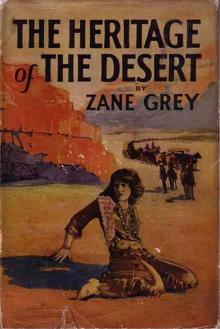 The Heritage of the Desert: A Novel
The Heritage of the Desert: A Novel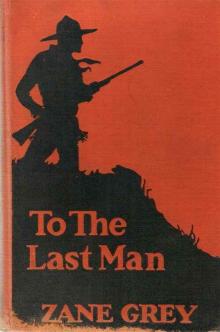 To the Last Man
To the Last Man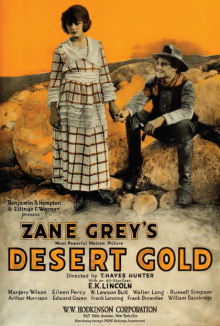 Desert Gold
Desert Gold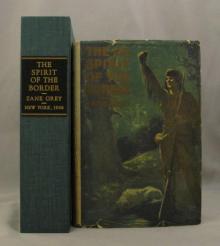 The Spirit of the Border: A Romance of the Early Settlers in the Ohio Valley
The Spirit of the Border: A Romance of the Early Settlers in the Ohio Valley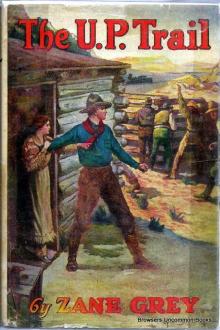 The U. P. Trail
The U. P. Trail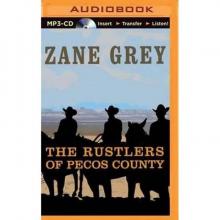 The Rustlers of Pecos County
The Rustlers of Pecos County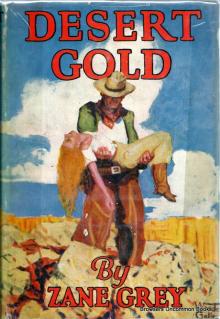 The Border Legion
The Border Legion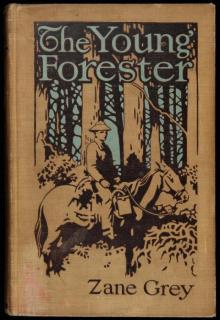 The Young Forester
The Young Forester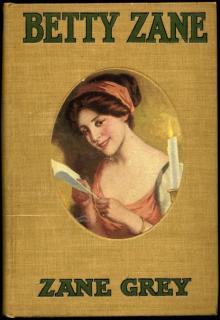 Betty Zane
Betty Zane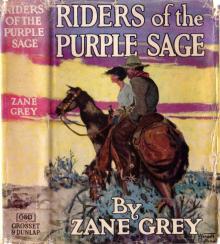 Riders of the Purple Sage
Riders of the Purple Sage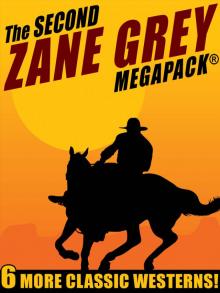 The Second Zane Grey MEGAPACK®
The Second Zane Grey MEGAPACK®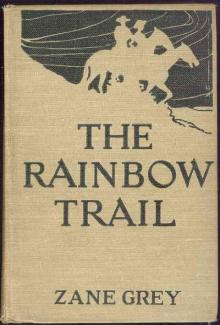 The Rainbow Trail
The Rainbow Trail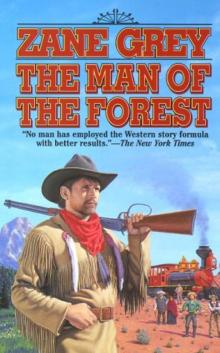 The Man of the Forest
The Man of the Forest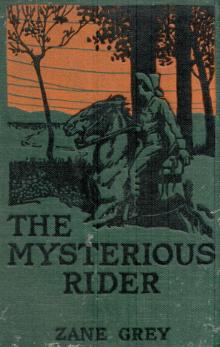 The Mysterious Rider
The Mysterious Rider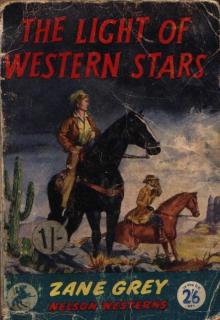 The Light of the Western Stars
The Light of the Western Stars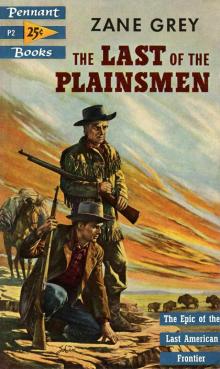 The Last of the Plainsmen
The Last of the Plainsmen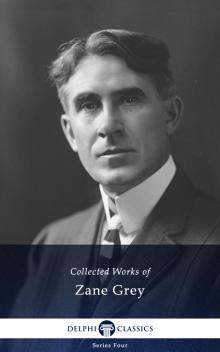 Collected Works of Zane Grey
Collected Works of Zane Grey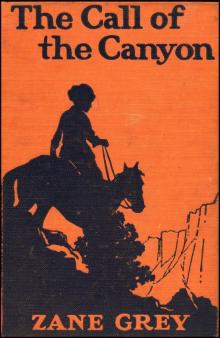 The Call of the Canyon
The Call of the Canyon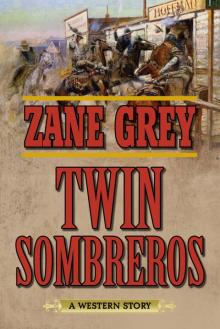 Twin Sombreros
Twin Sombreros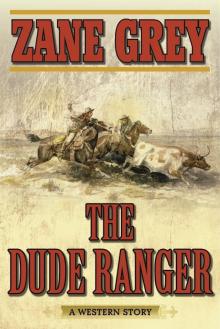 The Dude Ranger
The Dude Ranger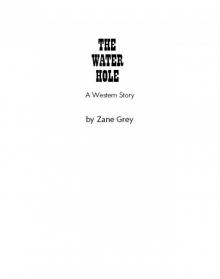 The Water Hole
The Water Hole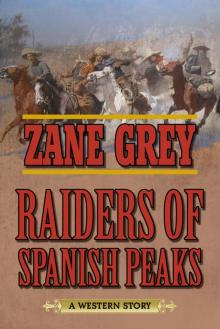 Raiders of Spanish Peaks
Raiders of Spanish Peaks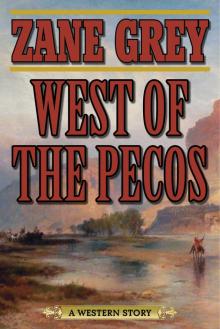 West of the Pecos
West of the Pecos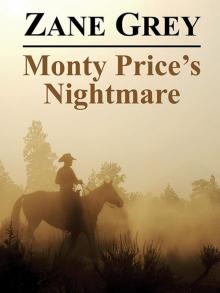 Monty Price's Nightmare
Monty Price's Nightmare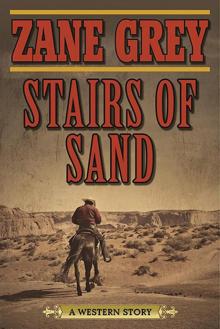 Stairs of Sand
Stairs of Sand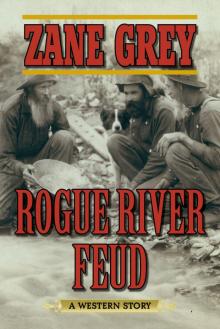 Rogue River Feud
Rogue River Feud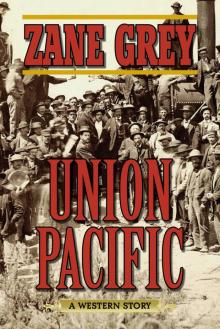 Union Pacific
Union Pacific The Western Romance MEGAPACK ®: 20 Classic Tales
The Western Romance MEGAPACK ®: 20 Classic Tales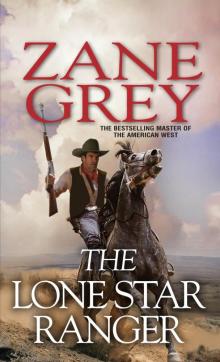 The Lone Star Ranger
The Lone Star Ranger The Zane Grey Megapack
The Zane Grey Megapack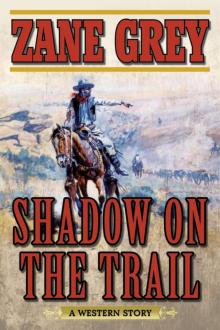 Shadow on the Trail
Shadow on the Trail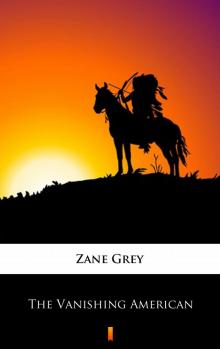 The Vanishing American
The Vanishing American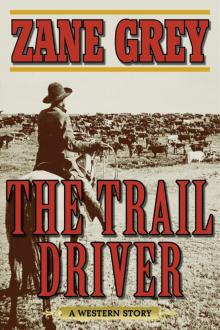 The Trail Driver
The Trail Driver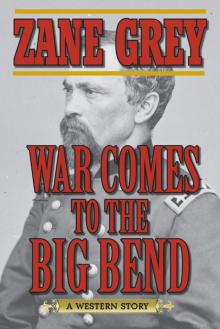 War Comes to the Big Bend
War Comes to the Big Bend The Westerners
The Westerners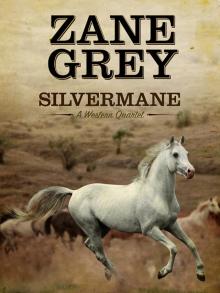 Silvermane
Silvermane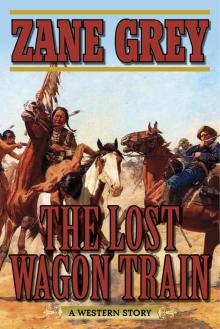 The Lost Wagon Train
The Lost Wagon Train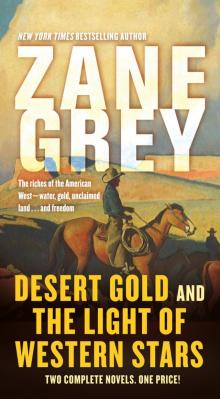 Desert Gold and the Light of Western Stars
Desert Gold and the Light of Western Stars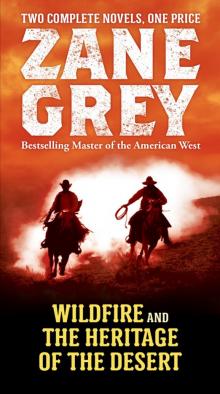 Wildfire and the Heritage of the Desert
Wildfire and the Heritage of the Desert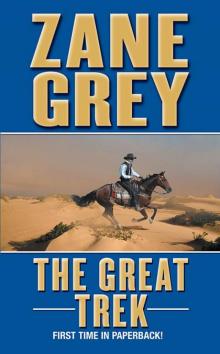 The Great Trek
The Great Trek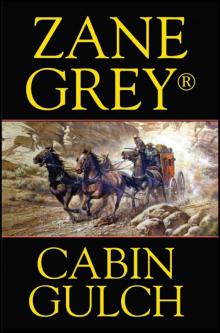 Cabin Gulch
Cabin Gulch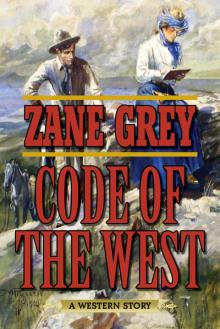 Code of the West
Code of the West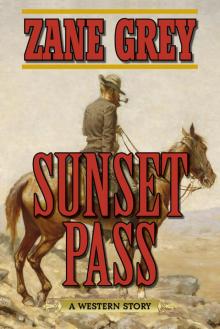 Sunset Pass
Sunset Pass Panguitch
Panguitch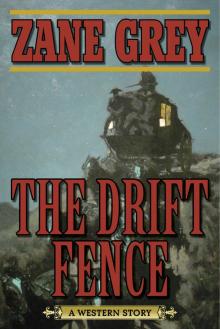 The Drift Fence
The Drift Fence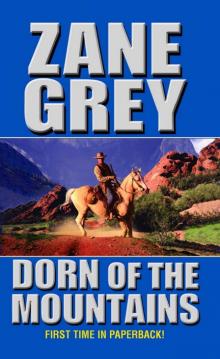 Dorn Of The Mountains
Dorn Of The Mountains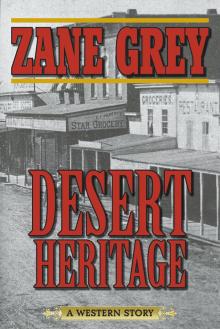 Desert Heritage
Desert Heritage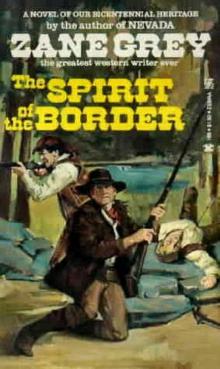 The Spirit Of The Border
The Spirit Of The Border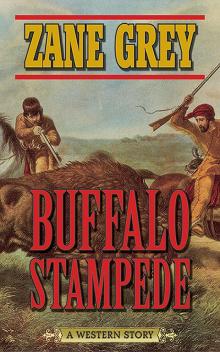 Buffalo Stampede
Buffalo Stampede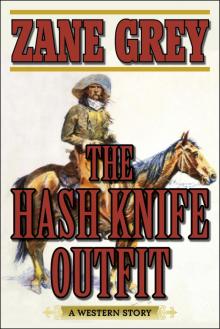 The Hash Knife Outfit
The Hash Knife Outfit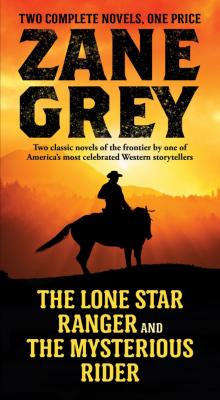 The Lone Star Ranger and the Mysterious Rider
The Lone Star Ranger and the Mysterious Rider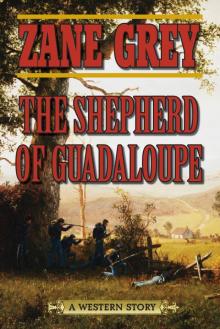 The Shepherd of Guadaloupe
The Shepherd of Guadaloupe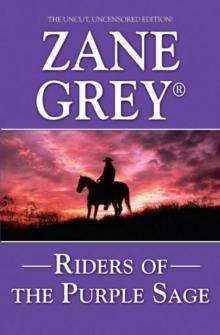 Riders of the Purple Sage (Leisure Historical Fiction)
Riders of the Purple Sage (Leisure Historical Fiction)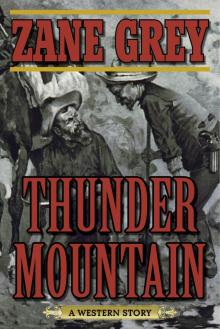 Thunder Mountain
Thunder Mountain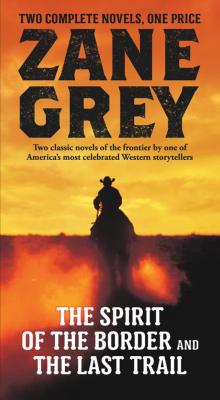 The Spirit of the Border and the Last Trail
The Spirit of the Border and the Last Trail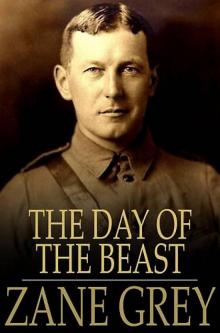 The Day of the Beast
The Day of the Beast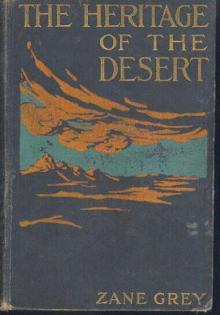 The Heritage of the Desert
The Heritage of the Desert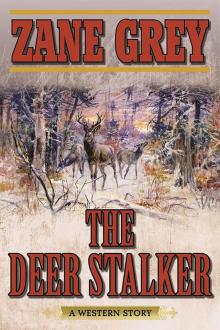 The Deer Stalker
The Deer Stalker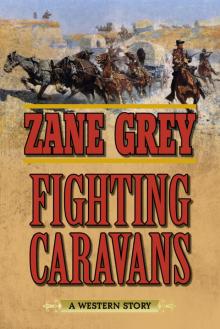 Fighting Caravans
Fighting Caravans